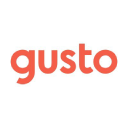How We Started The First Ever Catholic Meditation App
Hello! Who are you and what business did you start?
Hello! My name is Alex Jones and I’m the CEO and co-founder of Hallow, an audio-guided Catholic meditation and prayer app. Hallow aims to help people to combine the peace and stillness of meditation with the spiritual growth of prayer.
The app is comparable to the popular mindfulness meditation apps trending today, but was built with a lens of Christian faith. It offers a variety of prayer techniques, a choice in audio guides, sessions organized by theme, and options for session length.
Today, we’re earning about $6,500 / month in our 3rd month since launch.

What's your backstory and how did you come up with the idea?
Hallow is very much the fruit of a personal journey. Each of us on the founding team are exactly the target market.
Sorry, you need to login and/or become a member to view the rest of this content.

Download the report and join our email newsletter packed with business ideas and money-making opportunities, backed by real-life case studies.

Download the report and join our email newsletter packed with business ideas and money-making opportunities, backed by real-life case studies.

Download the report and join our email newsletter packed with business ideas and money-making opportunities, backed by real-life case studies.

Download the report and join our email newsletter packed with business ideas and money-making opportunities, backed by real-life case studies.

Download the report and join our email newsletter packed with business ideas and money-making opportunities, backed by real-life case studies.

Download the report and join our email newsletter packed with business ideas and money-making opportunities, backed by real-life case studies.

Download the report and join our email newsletter packed with business ideas and money-making opportunities, backed by real-life case studies.

Download the report and join our email newsletter packed with business ideas and money-making opportunities, backed by real-life case studies.
















